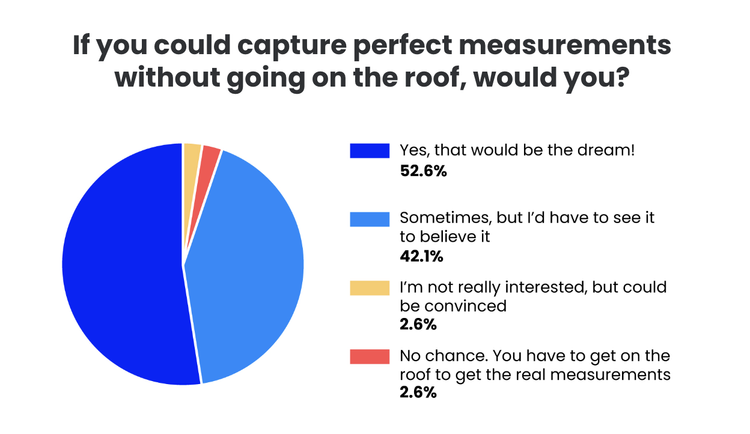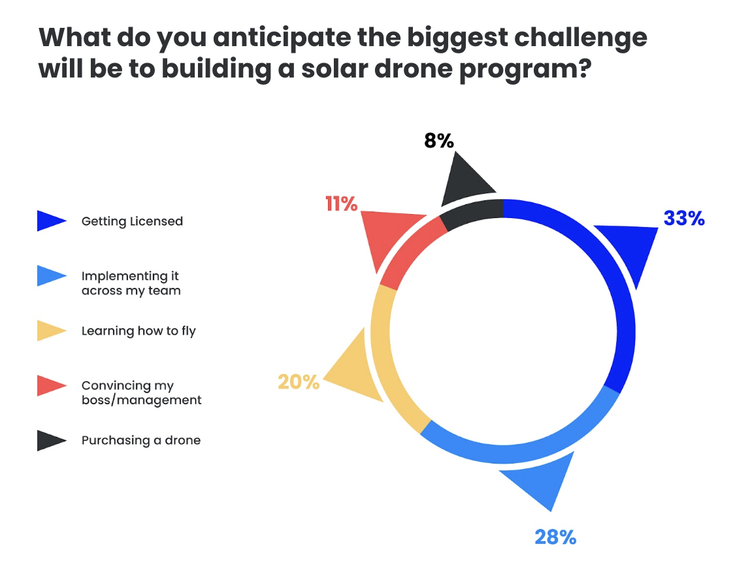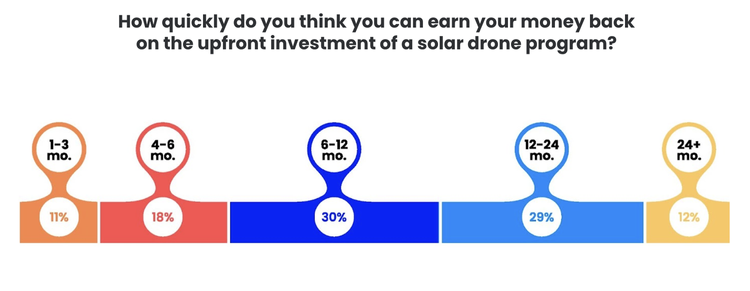With over 300,000 commercial drones registered in the US alone (and millions estimated globally), drones are becoming a powerful tool across multiple industries.
Drones are popular in industry for good reason: they offer precision beyond human capacity, are less expensive than other aerial options (like renting a helicopter), and give people autonomy to capture data in new ways.
Yet it seems solar contractors haven’t fully gotten on the bandwagon.
In Scanifly’s 2022 Surveyor and Designer Outlook, we found that only 23% use drones for solar use-cases such as marketing images. Further, we estimate that fewer than 5% of contractors use drones for heavy technical work such as roof surveying or infrared analysis despite drones being 5x more efficient for surveys, more accurate, safer than manual survey methods, and able to save contractors $100-$300+ per project.
Why don’t more solar contractors adopt drone technology?
Despite the benefits, it seems solar contractors aren’t adopting drones at the rate of other industries. After speaking with hundreds of contractors and surveyors, we believe it’s based on three factors:

1. (Unnecessary) fears of new technology
Even as drones become more popular in other use cases, some solar contractors are taking their time to adopt drones in solar.
Some solar contractors voiced concerns that their surveyors wouldn’t be interested in drones or that they prefer manual survey methods. However, our data suggests that’s not the case. When asked if they would like a surveying solution where they don’t need to get on the roof, 95% of surveyors said they were interested. Further, 68% of surveyors have flown drones in 2022, up from 48% in 2021.
2. Concerns about costs

Once a solar contractor is aware of drones, there’s a concern that a drone program will be time-consuming and expensive.
While there are a few steps to complete – buying the drones, getting an FAA Part 107 license, and training surveyors on drone flights – these steps are relatively quick.
First, you can buy drones on Amazon or direct from manufacturers such as Skydio or DJI. From there, our research found that someone can study and pass the Part 107 exam in less than a week using Drone Pilot Ground School’s course for preparation. Surveyors often tell us that getting fully comfortable with a drone takes 2-3 weeks.
3. Doing it the way it’s always been done
People are used to the manual way regardless of how inconvenient it is. However, this will need to change with market realities: demand for solar is exploding and some contractors can’t keep up using the old methods. Eventually, they could lose out on new business (if they aren’t already) to contractors with more capacity and better systems.
There are a lot of resources on how to build a solar drone program, and most contractors get things up and running within a few weeks. Further, the return on investment with drones is quick: 59% of contractors believe drones deliver ROI within 12 months.

From a surveyor perspective as well, there’s a financial benefit to learning drone skills. Our research found that coupling drone pilot skills with traditional surveying knowledge can earn someone up to $14,000 more per year.
Flight of the drones
The financial, employee engagement, and safety benefits of drones can’t be ignored for much longer. As demand for solar continues to grow, even the staunchest holdouts will eventually have to start using new technology like drones if they want to remain relevant.
The good news for solar contractors now is that drones have now reached a level of maturity that makes sense in solar. Not only are drones themselves affordable and accessible, but purpose-built solar design technology makes it easy to get accurate designs that lead to fewer truck rolls, redesigns, and call-offs.






